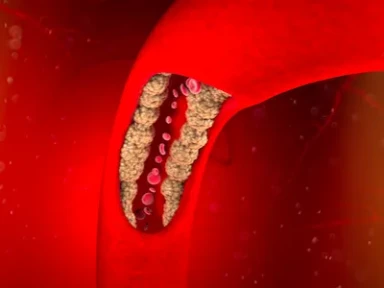Single-Pill Combinations in Dyslipidemia
This review describes the potential benefits of combination treatment and presents data supporting the use of single-pill combination (SPC) for increasing exposure to lipid-lowering treatment (LLT).

Key Takeaway
- The combination of statin and ezetimibe reduces low-density lipoprotein cholesterol (LDL-C) more effectively and is associated with a significantly lower risk of cardiovascular events than statin monotherapy.
- SPCs, rather than free associations of multiple pills, provide a strategic approach aiding LLT intensification without increasing pill burden or treatment complexity.
- SPCs have been shown to increase the adherence to LLT and the proportion of patients at LDL-C goal compared with free associations.
Why This Matters
- In real-life studies, the overall rate of LDL-C control at a population level is low despite the availability of safe and effective LLTs.
- Although appropriate LLT exposure is known to reduce cardiovascular risk, lipid levels, and atherosclerosis, new strategies are needed to improve LLT exposure.
Key Highlights
Evidence supporting statin and ezetimibe combination
- To increase LLT exposure, European guidelines recommended add-on ezetimibe for patients not meeting treatment goals on maximally tolerated statins.
-
Lipid levels:
-
Ezetimibe + statin significantly increased the number of patients at treatment goal.
- Adding ezetimibe to statins rather than doubling the statin dose helped significantly more patients attain the LDL-C goal.
-
-
Atherosclerosis:
-
Among patients with stable coronary artery disease needing percutaneous coronary intervention (N = 51), percent change in plaque volume after 6 months was significantly greater with ezetimibe 10 mg/rosuvastatin 5 mg than with rosuvastatin 5 mg (−13.2% vs −3.1%; P = 0.050).
- Greater reduction in LDL-C is associated with greater inhibition of plaque progression, making it reasonable to use maximally tolerated LDL-C-lowering potential to halt atherosclerosis progression.
-
-
Clinical outcomes
-
In Improve-it, the risk of post-ACS patients reaching the primary composite cardiovascular endpoint after 7 years was lower in ezetimibe/ simvastatin vs placebo/simvastatin groups (32.7% vs 34.7%, P = 0.016).
- A meta-analysis of nine RCTs (N = 19,461) showed that ezetimibe/statin combination significantly reduced the risk of reaching the composite cardiovascular endpoint than statin monotherapy (hazard ratio [HR] = 0.94 [95% confidence interval {CI}: 0.89–0.99]; P = 0.016).
-
-
Safety and tolerability:
-
Adding ezetimibe to existing treatment did not significantly increase the rate of drug-related adverse events; ezetimibe/statin combination was associated with lower adverse event rates than increasing statin dose.
- In PACE (N = 603) study, fewer patients in ezetimibe 10 mg/atorvastatin 10 mg group experienced adverse events (7.5% vs 11.9%) and drug-related adverse events (0.8% vs 3.1%) than in atorvastatin 20 mg group
-
Barriers to LDL-C control
-
Therapeutic inertia:
- Physician willingness to modify treatment is a significant factor in the likelihood of patients without lipid control achieving LDL-C control.
- In a case-controlled multivariate analysis of data from high-risk patients with hypercholesterolemia who experienced an ischemic event (N = 470), therapeutic inertia at baseline was significantly associated with short-term recurrence of ischemic events (odds ratio [OR] = 2.18 [95% CI: 1.04–4.51], P <0.05).
-
Adherence and persistence:
- Poor adherence and persistence are prevalent patient-related factors influencing lipid control and rates of negative outcomes.
- In an analysis of Italian primary care data from patients (N = 18,423) with very high cardiovascular risk who initiated statin, ezetimibe, or ezetimibe/simvastatin, good vs poor adherence was associated with significantly higher odds of being at LDL-C target after 3 (OR = 2.26 [95% CI: 1.88–2.73]) and 6 months (OR = 2.76 [95% CI: 2.28–3.33]).
Combination treatment and treatment exposure
- Among 29,797 patients receiving statins and ezetimibe who were followed for 5 years, each 10% increase in the LLT intensity × adherence was associated with a 10% lower risk (HR = 0.90 [95% CI: 0.86–0.94]) of reaching the composite cardiovascular event.
Benefits and potential drawbacks of SPCs
- Rather than free associations of multiple pills, SPCs help add ezetimibe to an existing statin treatment without increasing pill burden or treatment complexity.
- An Italian observational study and a German retrospective analysis reported the association of SPCs with significantly higher odds of adherence and larger LDL-C reduction, respectively, vs multi-pill association of statin and ezetimibe.
- In case of patient-reported side effects, it might be more difficult for physicians to determine causative agent when SPC is used vs when individual pills are used.
- In case of intolerance due to statins (e.g., muscular intolerance), some patients may be tempted to interrupt both statins and ezetimibe, and changes in the dose of statins could be more complex with SPC than with separate treatments.
Other SPCs in cardiovascular prevention
- Statin + fenofibrate vs ezetimibe + bempedoic acid may be considered for patients needing LDL-C and triglyceride reduction vs with statin intolerance.
- Schiele F, Pérez de Isla L, Arca M, Vlachopoulos C. Is it time for single-pill combinations in dyslipidemia? Am J Cardiovasc Drugs. 2021. doi: 10.1007/s40256-021-00498-2. Epub ahead of print. PMID: 34549371


-from-the-SAFEHEART-registry.webp/jcr:content/Clinical%20practice%20experience%20in%20patients%20with%20familial%20hypercholesterolemia%20(FH)%20from%20the%20SAFEHEART%20registry.webp)